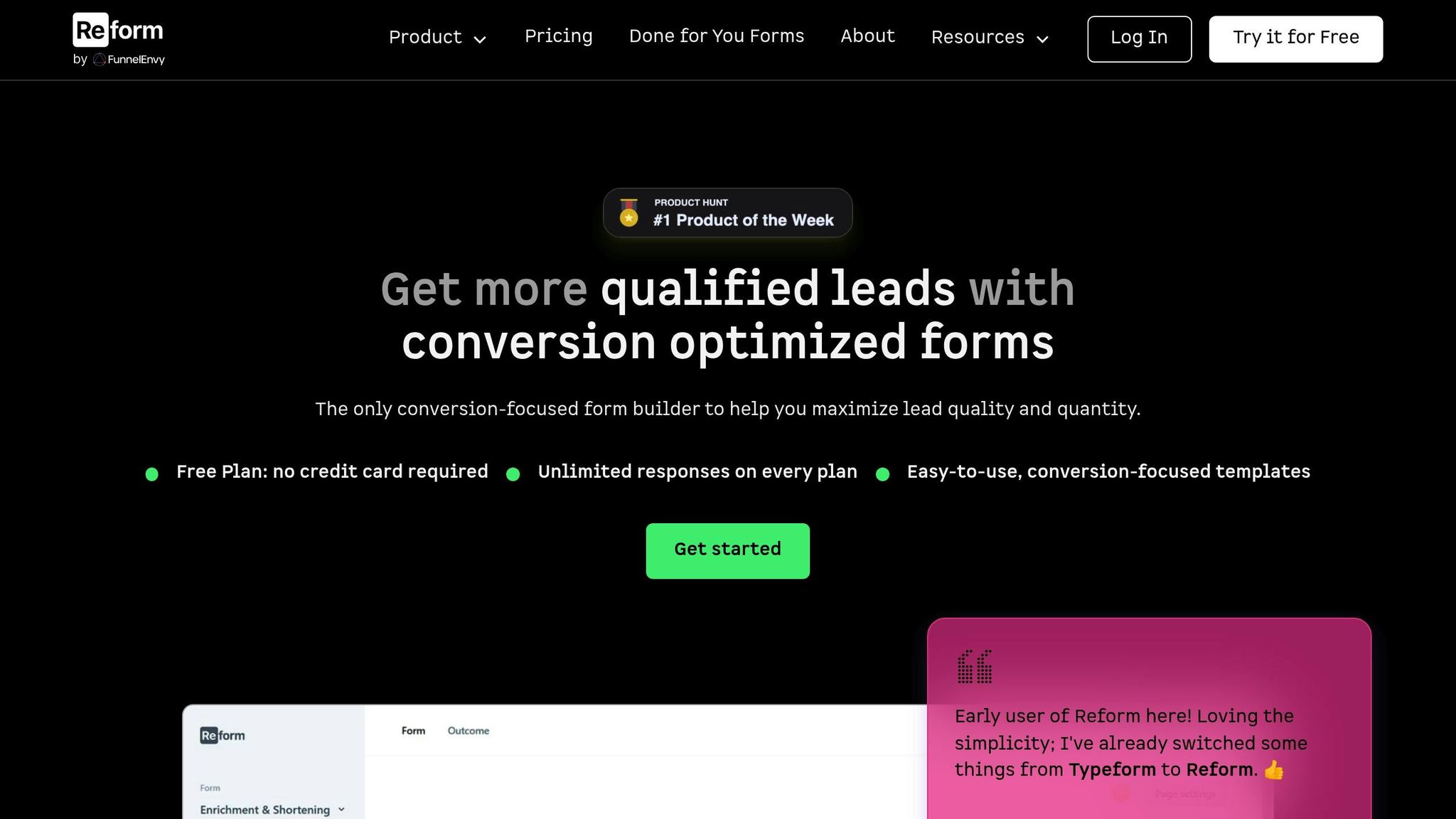DPIA Steps for Cross-Border Data Transfers

Managing cross-border data transfers can be tricky. If your business handles personal data across regions, a Data Protection Impact Assessment (DPIA) is essential to comply with laws like GDPR, PIPL, and CCPA. DPIAs help you assess risks, document transfers, and implement safeguards to protect privacy while meeting legal standards.
Key Points to Know:
- When to Conduct a DPIA: For high-risk transfers, new technologies, or data sent to countries without adequate protections.
- Steps for DPIA: Identify data details, assess risks, choose legal mechanisms (e.g., SCCs, BCRs), and document everything.
- Global Regulations: GDPR sets the standard, with PIPL (China), CCPA (California), and LGPD (Brazil) adding region-specific rules.
- Legal Mechanisms: Use adequacy decisions, SCCs, or BCRs when transferring data internationally. For unique cases, consider exceptions like explicit consent or contractual necessity.
- Best Practices: Encrypt data, review agreements regularly, train staff, and maintain detailed records.
Pro Tip: Use tools like Reform to streamline DPIA processes, ensuring compliance and saving time. Staying proactive with audits and updates is key to avoiding penalties and building customer trust.
Data Transfer Impact Assessment (#DTIA) Explained for #GDPRCompliance
Global Regulations for Cross-Border Data Transfers
When it comes to global data transfers, businesses must navigate a maze of international privacy laws. Each country has its own rules, requirements, and penalties, making it a tricky but necessary task for companies operating across borders.
GDPR Requirements for Cross-Border Transfers
The General Data Protection Regulation (GDPR), which went into effect in 2018, has set the gold standard for data protection and influenced privacy laws worldwide. Under GDPR, transferring data outside the European Economic Area (EEA) is prohibited unless the receiving country ensures an equivalent level of data protection.
One standout feature of GDPR is its extraterritorial reach - its protections follow the data wherever it goes. This means that any organization handling personal data from Europe must comply with GDPR, even if the company is based outside the EU.
To facilitate data transfers, the European Commission has issued adequacy decisions for several countries, including Argentina, Japan, South Korea, New Zealand, Switzerland, Canada (for commercial organizations), the United Kingdom, and the United States (for companies adhering to the EU‑US Data Privacy Framework). For countries without such adequacy decisions, GDPR offers alternatives like Standard Contractual Clauses (SCCs), Binding Corporate Rules (BCRs), codes of conduct, or certification mechanisms. In some cases, transfers can also rely on specific exceptions, such as explicit consent, contractual necessity, or vital interest protection.
Failing to comply with GDPR can result in fines of up to €20 million or 4% of global annual revenue, whichever is higher. The Schrems II ruling in 2020 further complicated matters by invalidating the EU‑US Privacy Shield, requiring additional safeguards for transfers to non-certified U.S. entities. Meanwhile, other regions have implemented their own rigorous data protection laws.
Other International Data Protection Laws
While GDPR often serves as a benchmark, other regions have introduced their own frameworks for managing cross-border data transfers.
China introduced the Personal Information Protection Law (PIPL) in 2021, which imposes strict rules on data leaving the country. Critical or sensitive personal data must be stored within China unless explicit approval is obtained. Companies transferring large volumes of personal data or "important" data must also conduct security assessments. Additionally, PIPL mandates explicit consent for transfers and requires that the purpose of the transfer be clearly defined. Non-compliance can result in fines of up to 5% of a company’s annual revenue in China, along with potential operational suspensions.
In the United States, the California Consumer Privacy Act (CCPA), effective since 2020, gives California residents more control over their personal data. While less stringent than GDPR, the CCPA requires businesses to obtain consumer consent before transferring or selling personal data, especially when it involves cross-border transfers. Consumers also have the right to opt out of data-sharing arrangements. Violations can result in fines of up to $2,500 per violation or $7,500 for intentional breaches.
Brazil's Lei Geral de Proteção de Dados (LGPD), which came into effect in 2020, governs personal data processing and international transfers. Transfers are permitted to countries with adequate data protection laws, or companies must implement appropriate contractual safeguards and obtain explicit consent. Penalties for LGPD violations can reach 2% of annual revenue, capped at 50 million BRL.
| Regulation | Effective Date | Key Transfer Requirements | Maximum Penalties |
|---|---|---|---|
| GDPR | 2018 | Adequacy decisions, SCCs, BCRs, or specific exceptions | €20 million or 4% of global turnover |
| PIPL | 2021 | Data localization, security assessments, explicit consent | 5% of annual revenue in China + operational suspension |
| CCPA | 2020 | Consumer consent, opt-out rights for data sharing or selling | Up to $2,500 per violation or $7,500 for intentional violations |
| LGPD | 2020 | Adequacy decisions, contractual safeguards, explicit consent | 2% of annual revenue (max 50M BRL) |
Navigating these laws requires a thorough understanding of each regulation’s requirements. From GDPR's global reach to PIPL's strict localization policies and CCPA's consumer-focused approach, businesses face diverse challenges. The next sections will delve into practical steps for conducting a Data Protection Impact Assessment (DPIA) to address these complex regulatory demands.
How to Conduct a DPIA for Cross-Border Transfers
Thorough documentation is a cornerstone of conducting a Data Protection Impact Assessment (DPIA), especially for cross-border data transfers. It ensures compliance and provides a clear record of every aspect of the transfer process.
Record Key Details of Your Data Transfer
When documenting your cross-border data transfer, make sure to include the following:
- A complete inventory of the personal data being transferred.
- A detailed map outlining the data flow from its origin to the destination.
- The legal basis for the transfer, supported by any agreements or instruments in place.
- Information on retention periods and how the data will be handled at its destination.
This detailed documentation not only demonstrates accountability but also streamlines audits and future reviews. By creating a thorough record, you set the stage for identifying potential risks and implementing the necessary safeguards in the next stages of your DPIA.
sbb-itb-5f36581
Legal Mechanisms for Data Transfers
After documenting the details of your data transfers, the next step is ensuring compliance with legal requirements. This involves choosing a legal mechanism that aligns with the destination's data protection standards.
Adequacy Decisions
When the European Commission determines that a country or international organization meets the EU's data protection standards, it may issue an adequacy decision. This allows personal data to move freely to that destination, just as it would within the EU - no extra contractual safeguards or approvals needed [8, 15]. The process includes the Commission presenting a proposal, the European Data Protection Board (EDPB) offering its opinion, and EU member states granting their approval. Countries currently covered by adequacy decisions include Canada (for commercial organizations), Japan, South Korea, and the United Kingdom. However, these decisions are not permanent and can be revoked if the destination's data protection standards decline.
Standard Contractual Clauses and Binding Corporate Rules
When an adequacy decision isn’t available, organizations can turn to alternative safeguards:
- Standard Contractual Clauses (SCCs): These clauses, pre-approved by the European Commission, outline clear obligations for both data senders and recipients. Their modular structure allows them to cover various transfer scenarios, such as controller-to-controller or processor-to-controller transfers [10, 13, 15]. SCCs generally don’t require prior approval from Data Protection Authorities, but they must be tailored to your specific situation, and a Transfer Risk/Impact Assessment must be completed [10, 14].
- Binding Corporate Rules (BCRs): BCRs serve as an internal code of conduct for multinational groups, governing data transfers within the same organization or group of companies engaged in joint activities [11, 12, 13, 14]. Establishing BCRs is a lengthy process - taking anywhere from 12 to 24 months - and requires approval from a lead supervisory authority, often in consultation with other relevant authorities [11, 13, 15].
| Mechanism | Best For | Approval Required | Implementation Time |
|---|---|---|---|
| SCCs | Transfers between separate organizations | No prior approval needed | Quick implementation |
| BCRs | Internal transfers within multinational groups | Approval from a lead supervisory authority | 12–24 months |
Transfer Exceptions
In situations where traditional legal mechanisms aren’t available or practical, transfer exceptions provide an alternative. These exceptions are limited to specific scenarios, such as:
- Explicit Consent: The data subject must give consent that is freely given, specific, informed, and unambiguous. They should also be made aware of the risks involved in transferring their data to a country without an adequacy decision.
- Contractual Necessity: This applies when a transfer is essential to fulfill a contract with the data subject or to implement pre-contractual measures. For instance, if a customer orders a product that needs to be shipped from a country lacking an adequacy decision, this exception may apply.
- Public Interest: Transfers may also be justified based on important public interest considerations.
These exceptions are typically suitable for one-time or occasional transfers rather than ongoing data flows. When completing your Data Protection Impact Assessment (DPIA), it’s critical to document the legal mechanism you’ve chosen and explain its relevance to your specific transfer scenario. Proper documentation is essential for audits and regulatory reviews, forming a key part of compliant DPIAs and ensuring best practices are followed in implementation.
Tools and Best Practices for DPIA Implementation
Building an effective DPIA process takes more than just checking boxes. It requires thoughtful practices, reliable tools, and a company-wide commitment to turning compliance into an operational advantage.
DPIA Best Practices
Centralize documentation for accountability.
Keep all DPIA records, risk assessments, and mitigation plans in a single, timestamped repository. This makes audits more efficient and ensures you have a clear trail of compliance.
Use strong encryption methods.
Protect data during cross-border transfers by encrypting it both at rest and in transit. For transfers to regions without recognized adequacy decisions, consider extra precautions like end-to-end encryption with independently managed keys to safeguard personal data.
Review agreements and regulations regularly.
Schedule quarterly reviews of data transfer agreements and stay updated on any regulatory changes affecting your operations.
Adopt a numerical risk scoring system.
Evaluate risks based on factors like data sensitivity, transfer volume, destination country, and existing technical safeguards. This approach helps you focus on the most critical risks.
Using Reform for Compliant Data Collection

Reform offers tools that simplify DPIA processes while ensuring compliance with data protection regulations.
- Conditional routing: Customize data collection flows based on the user’s location. This ensures data from different regions is handled according to the applicable regulations.
- Multi-step forms: Minimize privacy risks by collecting only essential information at each stage. Start with basic details and request additional data only when it's necessary and legally justified.
- Email validation and spam prevention: Catch errors in real time to maintain data accuracy and avoid downstream compliance issues.
- Seamless integrations: Easily connect Reform with your CRM and other systems to streamline compliance workflows.
- Custom CSS and JavaScript support: Adapt privacy notices and consent mechanisms to align with user location or processing requirements. This flexibility helps you meet region-specific privacy standards.
Staff Training and Regular Audits
Keeping your team informed and your processes up to date is essential for maintaining compliance.
Train your staff quarterly.
Customize training sessions for different roles. For example, marketing teams need to understand consent rules, IT teams should focus on technical safeguards, and legal teams must stay current on regulatory updates. Use real-world examples from your organization to make training more relevant.
Schedule regular audits.
Perform annual audits for all cross-border data transfers, and conduct monthly spot checks for high-risk or new data flows. Document findings in a standardized format to ensure follow-up actions are tracked and completed.
Foster cross-functional collaboration.
Hold regular meetings with teams across departments to discuss data initiatives, review changes to transfer agreements, and stay ahead of regulatory developments.
Keep a detailed inventory of third-party processors.
Monitor where your vendors process data and the legal frameworks they follow. Regularly review agreements and require immediate updates if there are changes to their data processing practices or security measures.
Prepare for incidents.
Develop and maintain templates for responding to data breaches or violations. Having a clear plan in place ensures a swift and effective response when issues arise.
Conclusion
Managing cross-border data transfers becomes much simpler when you follow a structured five-step DPIA process: assess the need, document the transfers, identify risks, implement controls, and regularly update your practices.
Successful organizations view DPIAs not as one-off tasks but as ongoing business strategies. This mindset transforms compliance from a mere obligation into an opportunity to build trust and strengthen competitive positioning.
Key Takeaways from the DPIA Process
- Thorough documentation fosters accountability. Keep detailed records of all cross-border transfers, including the legal basis, types of data involved, recipient information, and security measures in place. This not only ensures compliance but also simplifies audits.
- Risk assessments should be specific. Pinpoint practical threats such as government surveillance in the recipient country, weak breach notification laws, or insufficient technical safeguards at the receiving organization.
- Legal frameworks provide structure but need reinforcement. While tools like Standard Contractual Clauses or adequacy decisions establish a legal foundation, robust technical and organizational measures are essential to secure data effectively.
- Frequent reviews prevent issues. Schedule quarterly evaluations of your DPIA documentation and transfer agreements to stay ahead of regulatory updates and evolving business needs.
When combined with the right tools, these steps make compliance more efficient and less burdensome.
Simplifying Compliance with Tools
Modern tools can significantly streamline the DPIA process, making it easier to stay compliant while securing your data.
For instance, platforms like Reform help automate DPIA requirements with features like conditional routing, multi-step forms, and real-time validation. These tools ensure accurate data handling and maintain a clear audit trail.
- Seamless integrations improve workflows. Automated CRM integrations eliminate the need for manual data entry, reducing errors and ensuring secure, consistent documentation across your systems.
The best tools are those that adapt as your business grows. Whether you're entering new markets or expanding data processing activities, flexible platforms can scale with your needs, keeping compliance costs in check while maintaining high standards for data protection.
FAQs
How do GDPR, PIPL, and CCPA differ in their cross-border data transfer requirements?
The GDPR emphasizes the need for specific mechanisms to facilitate cross-border data transfers, such as adequacy decisions, standard contractual clauses, or binding corporate rules. Its primary focus is on implementing strict protections to ensure secure international data sharing.
The PIPL (China’s Personal Information Protection Law) takes a different approach by requiring explicit consent from individuals before any cross-border data transfer. Organizations must also perform security assessments, introducing more upfront compliance measures compared to the GDPR.
The CCPA (California Consumer Privacy Act) prioritizes transparency. It requires businesses to inform consumers about data transfers and gives individuals the right to opt out. Unlike GDPR or PIPL, the CCPA does not heavily focus on specific transfer mechanisms but instead highlights consumer control over their personal data.
What’s the best way for a business to choose between SCCs and BCRs for cross-border data transfers?
When choosing between Standard Contractual Clauses (SCCs) and Binding Corporate Rules (BCRs) for cross-border data transfers, it’s essential to assess your specific data-sharing needs and compliance obligations.
SCCs work well for straightforward, external data-sharing scenarios. These are contract-based agreements that outline the terms of the transfer and are pre-approved by regulators. On the other hand, BCRs are tailored for larger organizations handling internal, intra-group data transfers. They require a company-wide compliance framework and are designed to ensure consistent data protection across all entities within the group.
Think about the complexity of your data transfers - are they external or internal? Also, consider the level of governance your operations require. This evaluation will guide you in choosing the legal mechanism that best fits your business model and regulatory responsibilities.
What are the key steps to ensure compliance with international data protection laws when transferring data across borders?
To navigate the complexities of international data protection laws during cross-border data transfers, organizations need to adopt a clear and organized strategy:
- Put legal safeguards in place: Use tools like Binding Corporate Rules (BCRs) or Data Processing Agreements (DPAs) to align with regulatory expectations.
- Perform Data Protection Impact Assessments (DPIAs): Assess potential risks tied to cross-border transfers and outline steps to reduce those risks.
- Keep up with regulatory updates: Track changes in global privacy laws, such as GDPR, and adjust your practices to remain compliant.
- Ensure secure data transfers: Apply privacy-focused technologies like encryption and access controls to safeguard data during transit.
It's equally important to be transparent by informing individuals about how their data is handled and, when necessary, obtaining their explicit consent. Regularly revisiting and refining your compliance processes ensures you stay aligned with regulations while fostering trust.
Related posts
Get new content delivered straight to your inbox

The Response
Updates on the Reform platform, insights on optimizing conversion rates, and tips to craft forms that convert.
Drive real results with form optimizations
Tested across hundreds of experiments, our strategies deliver a 215% lift in qualified leads for B2B and SaaS companies.


.webp)



